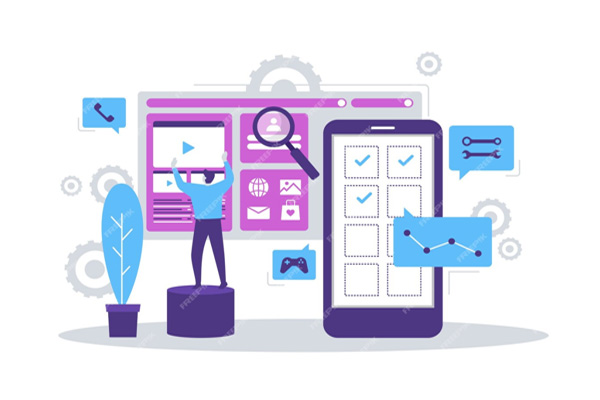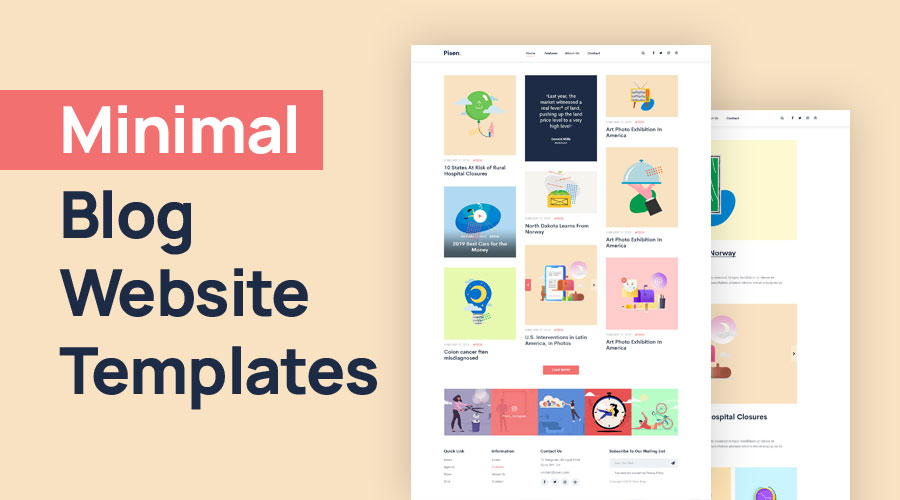E-Commerce UX: How Website Design Affects Conversion Rates?

In the modern digital era, eCommerce has emerged as an indispensable part of global retail. Did you know that retail eCommerce sales are likely to exceed USD 6.3 trillion by the end of 2024? Yes, you read it right!
Today, more and more consumers enjoy shopping online from the comfort of their homes. While the opportunities are vast for eCommerce businesses, the market is becoming increasingly competitive. To stay ahead of the competition and attract more traffic you need to have key plans to grow ecommerce business and focusing on the website design matters a lot.
Nearly 88 percent of online users are not likely to return to a website following a bad experience. No doubt, there can be several reasons for a poor user experience. However, the website design is a prominent one.
In this article, you will explore how the eCommerce website design can affect the user experience and conversion rates. Let’s dive in!
Impact of Website Design on Conversion Rates

There are several factors of eCommerce website design that can influence conversion rates. Read on to explore the most prominent ones!
Visual Design
Did you know that 59 percent of people prefer browsing well-designed and beautiful websites rather than basic ones? Yes, that’s true! Unless and until, users interact with your website, converting them isn’t possible. Therefore, focusing on the visual elements of your eCommerce website is crucial.
The visual design is all about the topography, layout, images, and other elements incorporated in a site to make it visually appealing and grab the attention of the target audience. A visually appealing Website Design is Important for Business Profitability.
Moreover, the visual design can also make the usability and navigation of websites easier. Various UX design challenges are encountered by developers and it is crucial to overcome these challenges and provide users with a better user experience All these can ultimately enhance the user experience of your target audience and help drive more conversions.
Website Load Time
In the fast-paced world of today, no one wants to wait. If an eCommerce website takes too much time to load, visitors are likely to abandon such sites and switch to the competitors.
On the other hand, a website that loads in just a few seconds can deliver a positive experience to visitors. As a result, it can increase the chances of them taking the desired action. By improving the engagement level of the visitors, it can help increase your conversion rates.
Website Navigation
Navigation is all about the way in which visitors interact with your eCommerce website and find the relevant information they are looking for. A poorly designed website can result in a lot of confusion. When users are not able to find what they are searching for, it can ultimately lead to frustration and affect their overall experience.
On the other hand, a well-designed eCommerce website offers intuitive and clear navigation. As a result, it allows visitors to easily find the information, products, and services they are looking for in much less time. The smooth navigation can encourage them to take the intended action and improve conversion rates.
Mobile-Responsiveness
In recent times, more and more people prefer accessing eCommerce websites on their mobile devices. If your site isn’t optimised for such devices, users are likely to come across several issues while browsing your website. It can result in poor user experience and may compel your visitors to leave your eCommerce site in frustration.
However, having a mobile responsive design can improve the engagement level of the users and deliver them an exceptional experience. It allows them to conveniently adjust the design and layout to fit their screen size and make operation easier. Ultimately, it can lead to higher conversion rates.
Website Content
Before making a purchase, consumers want to know more about the products. Therefore, they visit eCommerce websites and look for more information relating to the different products.
Clear, concise, and high-quality content can keep your visitors engaged with your brand. It can help avoid potential confusion, enhance user experience, and ensure better conversion rates for your website.
Tips to Improve Website Design and Maximise Conversion Rates
Now that you know the significance of website design and its impact on conversion rate, you must be wondering how to improve it. Delve into the prominent techniques for optimum success!
Consider the Layout of Product Pages
Most eCommerce website owners prioritise the product descriptions and images. However, the layout also matters a lot. A confusing layout can limit the visitors from finding the desired information and negatively impact their user experience.
To provide the best user experience, you must focus on presenting enough information on your product pages in a logical manner. Organise the information in such a manner that the visitors do not have to indulge in excessive scrolling. All these can make navigation easier for the users, allow the shoppers to make decisions efficiently, and improve your conversion rates.
Simplify the Checkout Process
Ever wondered why a lot of consumers add several items to the cart but do not complete the purchase? While there can be many reasons, one of them is the complicated checkout process. If your website has a lengthy and cumbersome checkout procedure, it can significantly affect the user experience of visitors and affect your conversion rates.
Therefore, it is wise to reduce the number of steps and offer multiple payment options to ensure maximum convenience for the visitors. Moreover, adding a guest checkout option can also be an excellent idea. Streamlining the checkout process is indeed a simple way of boosting the conversion rates of your eCommerce website.
Set Clear CTAs
CTAs or call to action are basically the marketing signals that encourage the visitors to take the desired action. It can be anything from subscribing to your newsletters to making a purchase. To enhance the conversion rate of your eCommerce site, establishing a clearly visible CTA is crucial.
Often, the CTAs aren’t prominent and may be overlooked by the visitors. Therefore, it is advisable to keep the design of the CTA button completely different from the rest of the content present on your web pages. For instance, you can change the size and font of the CTA or give a different colour to make it easily visible to the eyes of your potential customers.
Focus on Cohesive Branding
Consistent branding can enable eCommerce sites to build trust among visitors and make it easier to convert them into customers. When it comes to cohesive branding, you need to consider a number of aspects. First, ensure that the logo of your eCommerce business is clearly visible and consistent across all pages.
Second, select a colour palette that effectively reflects your brand identity and leverage it consistently throughout the site. Choose consistent colours for the CTA buttons, content, and background on all the pages. Finally, focus on the topography of your eCommerce website. Select a visually appealing and legible font complementing the style of your brand and keep it consistent throughout.
Improve the Page Load Speed
An eCommerce site that takes more than 3 seconds to load can lead to a higher abandonment rate. You wouldn’t definitely want that. Therefore, enhancing your page loading speed is the need of the hour.
To make your eCommerce web pages load faster, compressing media and saving space is a great idea. Apart from that, you can make the most of browser caching and minimise HTTP requests as much as possible. Moreover, paying for stable hosting can also be an ideal way of enhancing your page speed.
Focus on Whitespace
eCommerce websites often add too much content to their web pages. Too much text or images can clutter the websites, cause confusion among visitors, and affect their overall user experience. Therefore, striking the right balance between whitespace and content matters a lot.
Having sufficient white space on your web pages can make it easier for customers to navigate through the content. Moreover, it can easily highlight the key information in a simple way. As a result, improving user experience and boosting conversion rates becomes easy.
Include Trust Signals
In the complex digital world of today, people often hesitate to provide their personal details. However, to convert your users, you may require certain information. That is why it is essential to build confidence among your consumers by including trust signals.
Make sure that the padlock shows in the address bar of your eCommerce website. It is a clear sign that your site has SSL certification. Besides that, highlight customer reviews to spread the good word relating to your happy clients.
Conclusion
The design of your eCommerce website is indeed a critical aspect in determining your success or failure. It can have a significant impact on the user experience and influence the conversion rates. The design elements like navigation, loading time, visual appearance, and mobile-friendliness can all affect the conversions of your eCommerce site.
In order to boost your conversion rate, speeding up your website, flaunting trust signals, offering an easy checkout, and optimising the product page layout is essential. Are you ready to grow your conversions and drive sales? Partner with the experts in the industry and avail of the best solutions.




